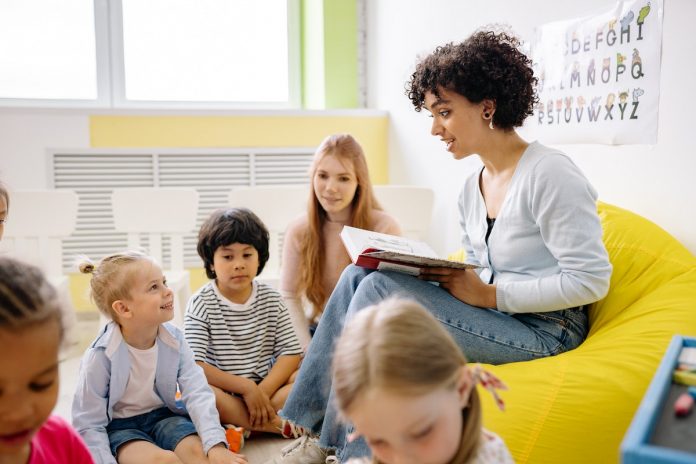Engagement is the process of drawing somebody’s interest or participation. Could a better teacher, a new course structure, or a reformed grading system become some of the best ways to increase student engagement? These are just some questions that may arise when thinking about improving student engagement at school.
Student engagement is essential because it’s linked to a critical aspect of education to determine, and improve student achievement and affect lifelong learning for those who have taken part in school programs. Engagement is necessary for schools to enhance their academic performance.
Many excellent student engagement strategies are available for schools to increase student engagement, and it is safe to say that these strategies are many and varied. There are a lot of initiatives schools can adopt to make their classrooms more engaging. Here are some of the best classroom engagement strategies.
1. Educational Technology
Educational technology is a set of tools, and mechanisms used in schools that help to increase student engagement. It enables the teacher to remain in the classroom, connect with students, and provide adequate teaching resources. There are lots of educational technologies available which can be implemented in classrooms today.
The best educational technology will increase student engagement by keeping the teacher connected to students or even integrating educational technologies into every daily schedule. Educational technology also helps teachers to stay updated with students’ interests, and provides them with sufficient educational resources to engage comprehensively.
2. Classroom Management Strategies
Classroom management strategies help schools to control students’ behaviors. There are several ways in which classroom management strategies work to increase student engagement. They should be included in every school’s teaching strategy. There is a range of classroom management strategies available to the teachers, and teachers can use them based on their class and students’ behaviors.
They allow the teachers to have complete control over classrooms and know what is happening in them. Many students lack motivation, and constantly exhibit bad behavior within a school, making it difficult for other students to concentrate.
3. Active Learning Techniques and Teaching Strategies
Active learning techniques help students to learn more effectively. They will improve student engagement by allowing teachers to teach differently, and offer a more engaging way of learning. Active learning techniques are effective in automating data collection, analysis, correcting mistakes, and automatic grading.
This would help teachers to respect data and know why students’ scores are rolling up after each evaluation period. Teachers can use this data at the right time to make educational decisions. This will make the difference between the end-of-year exams, and the best grades for students.
4. Flexible Seating
Flexible seating is a great way to encourage student engagement. This technique offers students to learn more interactively and excitingly. Flexible seating also provides individual and group activities. This will allow students to discuss or share their views or progress with others in other classrooms.
It also encourages collaboration, which helps the students to work together on specific projects or tasks. This will improve the relationships between teachers and students. To make students feel comfortable, they should be seated with people they are interested in. It will also increase their curiosity, as they will have more information to access before beginning a new task.
5. Peer Tutoring Programs
The best peer tutoring programs will cover complex topics and provide teachers with the information they require to plan their curriculum. They also allow students to participate in these programs and can help increase student engagement by offering different learning opportunities for each student.
Peer tutoring will help teachers implement new teaching strategies, making the difference between average test scores and good grades for students. Bring in guest speakers from the local community willing to share new ideas and knowledge on different subjects with students. The most important thing students will gain from these activities is the ability to ask questions, think creatively and critically, evaluate information and create solutions.
6. Culturally Responsive Teaching Practices
Teachers should use culturally responsive teaching practices to engage students with different backgrounds and cultures effectively. As a result, students will be more receptive to the learning process and develop an interest in discussing issues relevant to their everyday lives. This will encourage student participation and help them understand topics better.
It will also help teachers to be inspired by different cultures and communities. This may lead to an increased improvement in classroom engagement by providing a variety of activities for the students. It also lets teachers know students’ preferred learning styles, and help them learn more effectively. The teacher can also develop strategies for thinking, modeling, and providing feedback based on each student’s background. This will effectively increase student engagement as they learn in a comfortable way.
7. Reading and Book Fairs
Partnering with book fair companies makes great school fundraisers and activities for students. They have an incredible selection of books that appeal to parents and children. This will improve classroom engagement as students look forward to booking fairs because they want to purchase new books for their class libraries or for themselves. It promotes active learning for everyone in the classroom as students are encouraged to engage with the material presented, and share their thoughts with others. The better student engagement, the more effective and efficient learning will be for everyone. Teachers can also extend this to parents by involving them in class discussions, which will help them better understand their children’s exams and grades.
It is not easy to increase student engagement within the classroom. Every teacher should understand how students learn, and the best teaching strategies that would be more effective in increasing engagement rates. Teachers should also be familiar with the developmental level of students, and offer them experiences relevant to their current grade level. For example, students may raise their hands to answer questions during class discussions. This will help teachers better understand students’ thoughts and encourage them to participate more.











